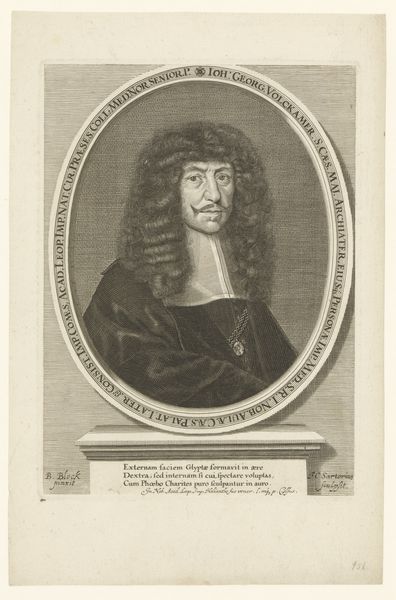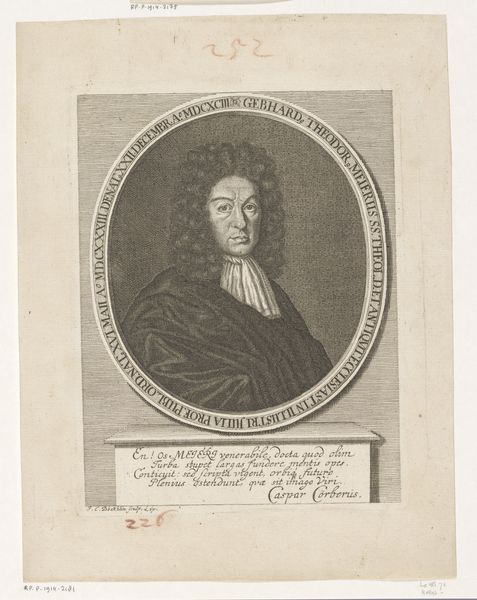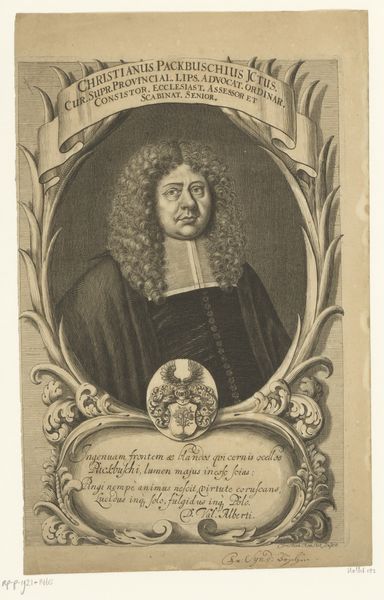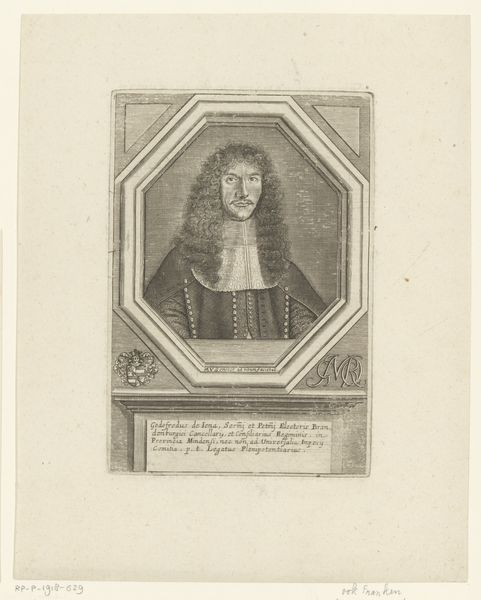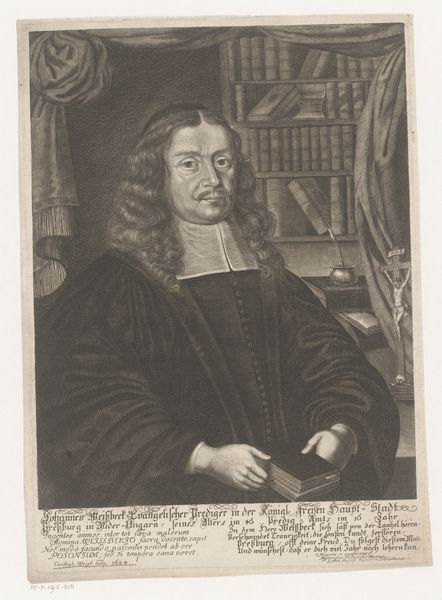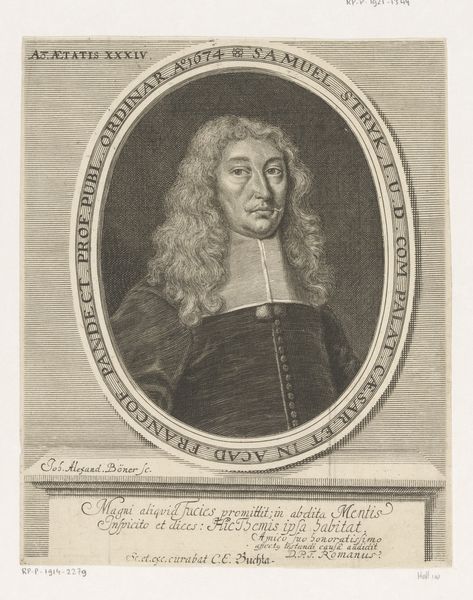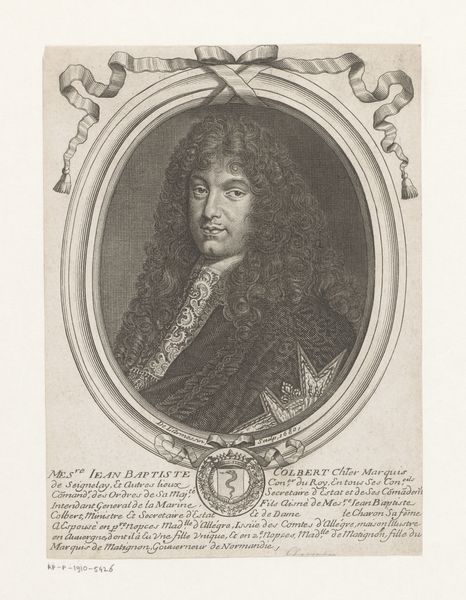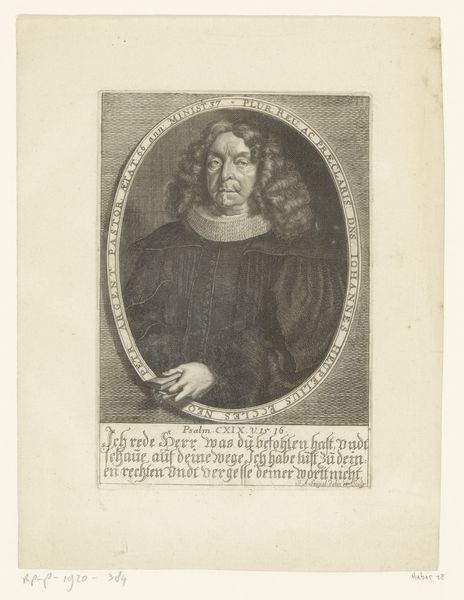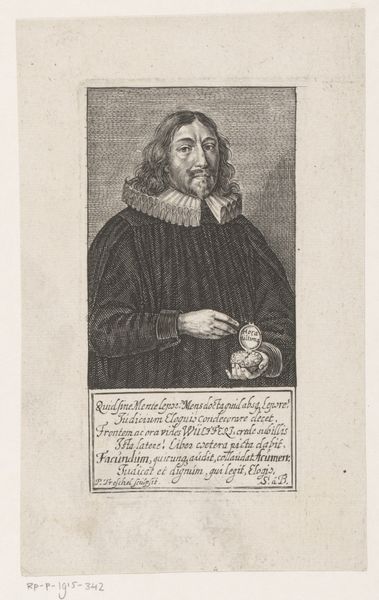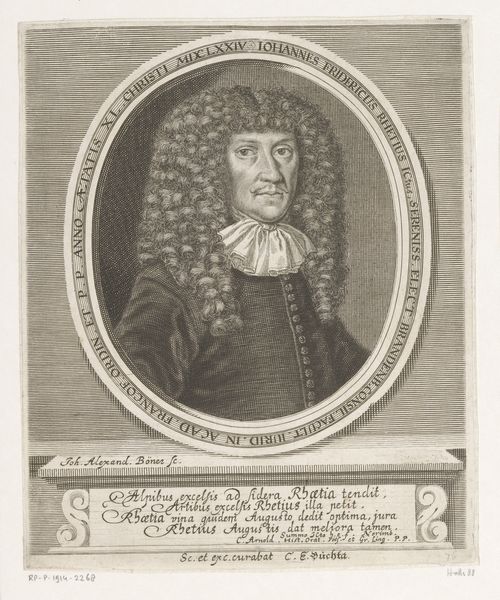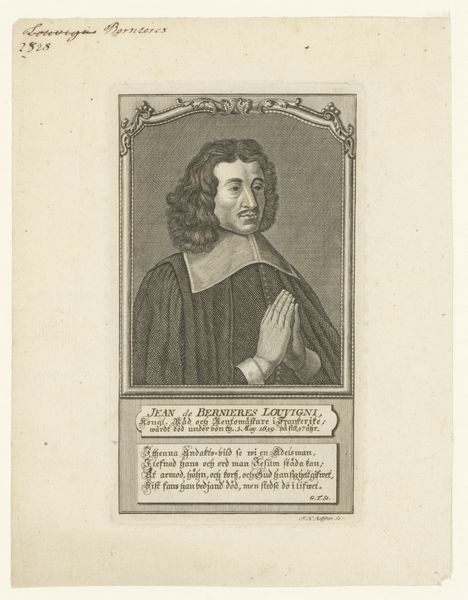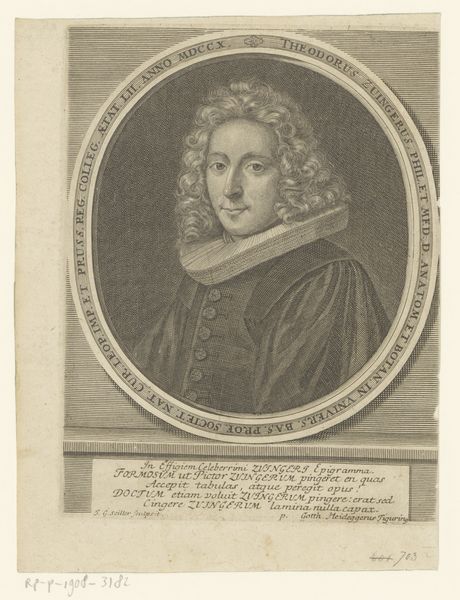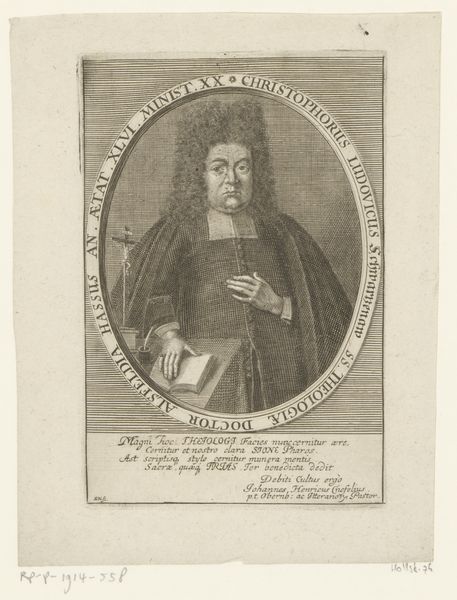
print, etching, engraving
#
portrait
#
baroque
# print
#
etching
#
old engraving style
#
history-painting
#
academic-art
#
engraving
Dimensions: height 180 mm, width 130 mm
Copyright: Rijks Museum: Open Domain
Curator: Before us hangs a printed portrait dating roughly from 1672 to 1720. The piece immortalizes Johann Jodocus Felwinger, crafted using etching and engraving techniques. What are your initial thoughts? Editor: I'm immediately struck by the tonal contrasts—the way the light catches Felwinger's elaborate wig against the darker backdrop creates such depth, wouldn't you agree? Curator: Absolutely. And situating Felwinger in his historical moment is key. A professor of politics, his very image is an assertion of status and intellectual authority in a society grappling with evolving power structures. That cascade of hair, the somber robes – symbols of entrenched societal roles. Editor: Quite. Note also how the sharp lines define not only his features but also the symbolic objects surrounding him. The carefully rendered books, the draped curtain...they’re almost hyper-realistic. Do you think it's meant to signal something beyond mere representation? Curator: Definitely. These are all visual cues meant to reinforce his persona and role in society. Let's also think about who had access to printed portraits like these. It was undoubtedly an exclusive circulation, reaching an educated and privileged audience. The Latin text, with it’s mention of Felwinger's academic achievements, serves a key function in limiting the sphere of cultural influence. Editor: It's interesting that, while the inscription confirms his credentials, it is contained and ordered neatly below. It is distinct from his bearing, from his direct gaze, and also in contrast to the wildness of the wig itself. What about that intense eye contact he makes? Does that tie into your socio-historical view? Curator: It solidifies it, truly. He is making a statement of presence in a world increasingly shaped by new ideas. But even his controlled and studied gaze contains a whole set of established social cues—who can stare back? Who should look away? Editor: It seems to invite interrogation even now. Well, examining the form and historical setting here provides a more complete picture, truly. Curator: I concur, it always serves to peel back the layers and see what sits underneath.
Comments
No comments
Be the first to comment and join the conversation on the ultimate creative platform.
